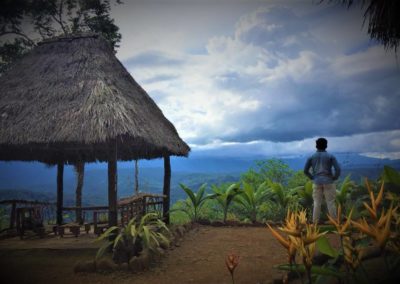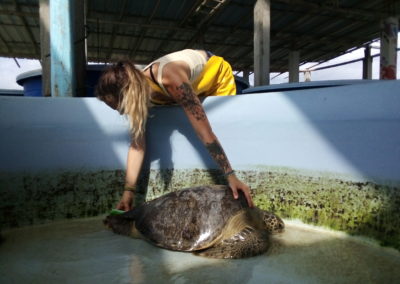AMAZONIAN WILDLIFE RESCUE AND REHABILITATION PROJECT
Assist with animal feeding and care, cleaning animal cages, park maintenance and making new paths, and construction of enclosures.
The project
A family started the wildlife refuge and it’s a privately funded sanctuary for rescued and confiscated wild animals. It is sometimes open to the public and school groups for tours, providing education about these species and their fate as illegal pets or trafficked animals, but their main goal is the protection of animal and plant life in the Amazon through the rescue and rehabilitation of flora and fauna.
Although a relatively new center, they are expanding rapidly and always working to improve the lives of the animals, with the ultimate goal of releasing them back out into the wild. Some of the animals there are: wooly monkeys, spider monkeys, squirrel monkeys, tortoises and turtles, crocodiles, parrots and macaws, pigs, and a variety of animals native to the Amazon jungle region of the country.
Dates/Length
Costs
2 weeks – $1750
1 month – $2300
2 months – $3400
3 months – $4500
Each extra week – $275
Location details
Requirements
Itinerary Sample
Mondays to Fridays
7:30 to 8:00 breakfast
8:00 to 12:00 according to the number of volunteers they are divided in two groups where they do different activities such as feeding the animals and cleaning cages and center maintenance, repairs, reconstructions.
12:00 to 14:30 lunch time
14:30 to 17:00 continue working with the activities
18:30 to 19:00 dinner time
1: No poverty
2: Zero hunger
3: Good health and well-being
4: Quality education
5: Gender equality
6: Clean water and sanitation
7: Affordable and clean energy
8: Decent work and economic growth
9: Industry, innovation and infrastructure
10: Reduced inequalities
11: Sustainable cities and communities
12: Responsible consumption and
production
13: Climate action
14: Life below water
15: Life on land
16: Peace, justice, and strong institutions
17: Partnerships for the goals
32 specimens were conditioned for weighing and approach (approach involves calling the animal to come, facilitating checks, and preventive medicine).
6 animal releases in Tamandúa: 1 sloth, 2 charapa turtles, 2 boas, 1 porcupine.
1 the first puma was reported in the reserve thanks to the placement of camera traps.
1 New installation for a new guest, the jaguarundi.
New 150-meter path on the squirrel monkeys’ island.
Renovated enclosure with an adjoining room for storing cleaning products and proper maintenance, including a sink and necessary utensils.
- Handling and care of animals, including operant conditioning techniques and nutrition practices.
- Each participant trained one animal, creating a special bond with the specimen.
- Placement of camera traps for wildlife monitoring.
- Participation in the improvement and cleaning of enclosures, as well as in the creation of facilities.
- Increased awareness of the importance of conservation and wildlife protection.
Role of the volunteer
Skills required
This internship is geared towards individuals with a desire to work with the preservation of ecosystems and fauna, enviromental education and willingness to learn and help.
What’s Included?
Accomodation
Available during the length of the project (Either at the project or local homestay families with 2 meals included)
Transfer from Quito to project
Aiport pick-up
EcuaExplora staff ready to transport you
Support 24 hours
On the ground EcuaExplora staff available
First weekend accomodation
In a hostal in Quito with breakfast
Orientation
(includes city tour and lunch)
Not Included
Health insurance (REQUIRED)
Meals not specified
Transportation to/from the homestay to the project each day
Optional extras
Add $60 per week for 6 hours Spanish classes if in Quito.




